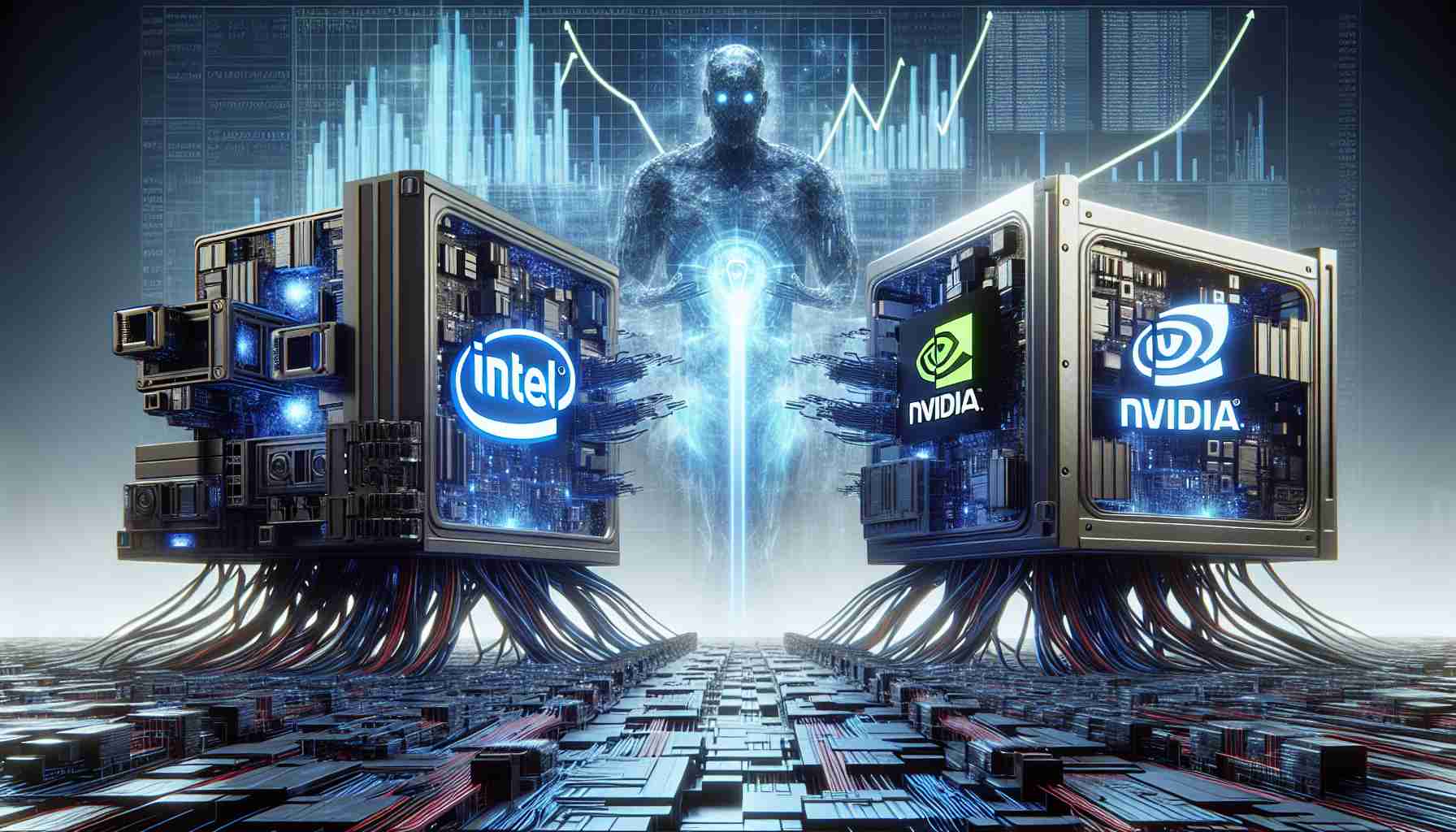Intel, once dominating the chip market, has faced challenges in recent years due to the rise of AI and internal design setbacks. On the other hand, Nvidia has strategically invested in AI, positioning itself as a leader in the industry. However, Intel’s CEO, Pat Gelsinger, remains optimistic about Intel’s future in AI and is determined to make significant advancements in the field.
At the Intel Vision 2024 event, Gelsinger unveiled Intel’s roadmap for driving AI innovation. This roadmap includes embracing an open-source approach, promising superior silicon compared to Nvidia’s offerings, and developing a portfolio that caters to AI workloads in various environments such as data centers, the cloud, PCs, and the edge.
Gelsinger believes that the AI market will shift towards open platforms, and enterprises will prefer sticking to familiar architectures if they can deliver comparable or better AI performance and efficiency than Nvidia. While the outcome remains uncertain, Gelsinger confidently stated that Intel has the support of major AI and IT companies, which will play a crucial role in driving the market towards Intel’s vision.
To compete with Nvidia’s latest advancements, Intel announced the upcoming release of the Xeon 6 family of server chips and Gaudi 3 AI accelerators. Gaudi 3 is expected to offer impressive performance and total cost of ownership (TCO) benefits. According to Gelsinger, the accelerators will outperform Nvidia’s current H100 model and come at a significantly lower cost.
Furthermore, Intel introduced the new Xeon 6 branding for their latest CPUs, including “Sierra Forrest” and “Granite Rapids.” These CPUs provide increased performance and rack density when compared to the previous generation. Intel also highlights the support for the MXFP4 data format in the new Xeons, enabling efficient AI training and inference with minimal accuracy loss.
Gelsinger emphasizes that these new CPUs serve as open alternatives to Nvidia’s high-powered GPUs and CUDA framework. Intel’s aim is to attract enterprises that are already familiar with the Intel Architecture and prefer open environments.
Intel’s commitment to AI extends beyond hardware. They are also exploring new techniques such as Retrieval-Augmented Generation (RAG), which allows incorporating corporate information in the data used to train large language models. This approach opens up opportunities for enterprises to leverage their unused and on-premises data for AI applications.
While Intel faces significant challenges in catching up to Nvidia’s dominance in the AI market, their latest innovations and strategic vision show their determination to regain their foothold. With the support of major industry players and a focus on open platforms, Intel aims to carve out its place in the evolving AI landscape.
FAQs
1. How is Intel competing with Nvidia in the AI market?
Intel is taking on Nvidia in the AI market by embracing an open-source approach, offering superior silicon, and developing a portfolio that caters specifically to AI workloads in various environments. They are confident that enterprises will choose Intel’s familiar architectures if they can deliver comparable or better AI performance and efficiency.
2. What are the new advancements introduced by Intel?
Intel has announced the upcoming release of the Xeon 6 family of server chips and Gaudi 3 AI accelerators. These advancements promise better performance and lower total cost of ownership (TCO) compared to Nvidia’s offerings. Intel has also introduced the new Xeon 6 branding for their latest CPUs, which provide increased performance and rack density.
3. How is Intel leveraging unused data for AI applications?
Intel is exploring techniques such as Retrieval-Augmented Generation (RAG), which allows incorporating corporate information in the data used to train large language models. This approach enables enterprises to utilize their unused and on-premises data for AI applications, expanding the possibilities for AI-driven insights and decision-making.
The chip industry has seen significant changes in recent years, with Intel facing challenges due to the rise of AI and internal design setbacks. Meanwhile, Nvidia has positioned itself as a leader in the AI industry through strategic investments. Despite these challenges, Intel’s CEO, Pat Gelsinger, remains optimistic about Intel’s future in AI and is determined to make significant advancements in the field.
At the Intel Vision 2024 event, Gelsinger unveiled Intel’s roadmap for driving AI innovation. One key aspect of this roadmap is embracing an open-source approach. Intel believes that the AI market will shift towards open platforms, and enterprises will prefer sticking to familiar architectures if they can deliver comparable or better AI performance and efficiency than Nvidia.
To compete with Nvidia’s latest advancements, Intel announced the upcoming release of the Xeon 6 family of server chips and Gaudi 3 AI accelerators. Gaudi 3 is expected to offer impressive performance and total cost of ownership benefits. Intel aims to outperform Nvidia’s current H100 model while offering a significantly lower cost.
In addition to hardware advancements, Intel is exploring new techniques such as Retrieval-Augmented Generation (RAG). This approach allows for the incorporation of corporate information in the data used to train large language models. By leveraging unused and on-premises data, enterprises have the opportunity to utilize their resources for AI applications and gain valuable insights.
Despite Nvidia’s dominance in the AI market, Intel’s strategic vision and commitment to open platforms position them as a strong competitor. With the support of major industry players and their focus on providing superior silicon and open alternatives to Nvidia’s offerings, Intel aims to carve out its place in the evolving AI landscape.
For more information about Intel’s AI roadmap and advancements, you can visit the official Intel website at Intel.
The source of the article is from the blog radardovalemg.com


